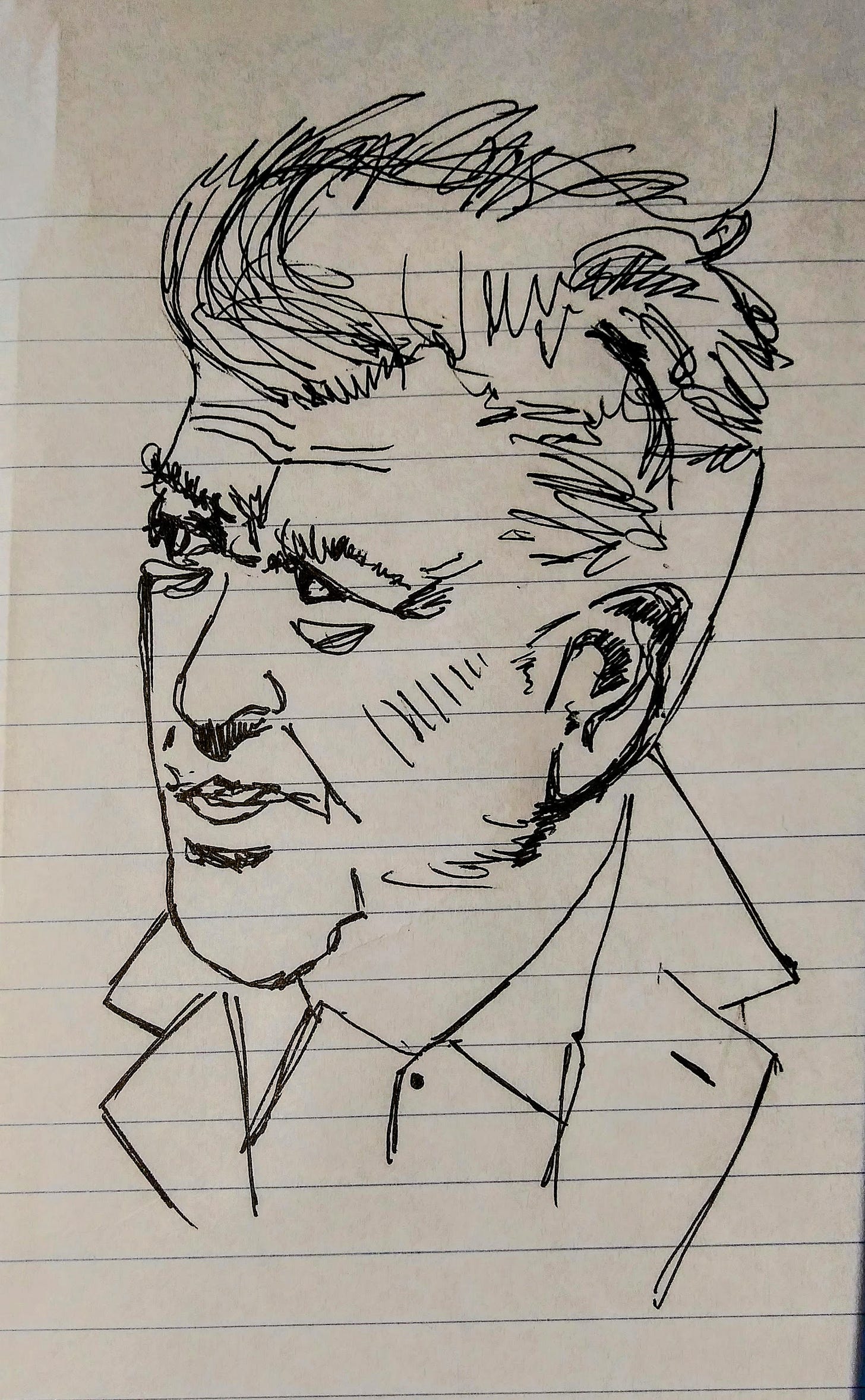“One night I was painting a garden at night. Mostly black with some leaves — green — coming out. And I was sitting looking at this painting and from the painting I heard a wind and then I saw the green start to move and I said ‘Oh! A moving painting.’”
— David Lynch recounting the first time he considered film-making
It seems at best facile and at worst vain that I should be mourning the death of a film director, and yet since the news I received on Thursday night I have been mourning the loss of David Lynch — a figure who over the past decade I’ve come to depend on, not because I was awaiting a new work, but because I knew that, somewhere in California, another soul who was living “the Art Life” was also meditating twice a day and trying to live as kind a life as possible, and celebrating the Spirit within each of us, inspiring each of us to be our best selves, and to do our best work.
I became interested in Transcendental Meditation because of Lynch, and eventually paid the money to learn the practice. (There is so much to talk about here that I’m not going to talk about now — but perhaps I will later, at an appropriate time. This isn’t a piece about TM.)
People talk a lot about the para-social attachments which we are beginning to form with celebrities in this age of podcasts and YouTube, and it’s true. But it’s also true that for millennia folks have been living in dialogues with those whose voices they’d read in books — Socrates, Shakespeare, Augustine, Aquinas, and many, many more.
It’s in the internal dialogues with these sorts that we have opportunity to develop new ways of thinking on which we can rely.
And it’s hard to know how different it might’ve been if I had only begun to learn about David Lynch after his death, that said meditating figure wasn’t doing so presently, but only had done so at another time.
I can’t know. I only have the chance to know that I lived through the time that he gave his online weather reports during COVID, that I was alive when he sat on a busy intersection with a cow in order to promote Laura Dern for consideration for the Oscars, that he played John Ford in a Spielberg picture, that recently I saw he had produced a series of interviews with ordinary people.
I was alive when Mulholland Drive came out, and I got to see it in the cinema, where he believed his work was meant to be seen. I can say the same thing for Inland Empire.
But I didn’t always love his films — I had to learn to see them, if I must be honest.
It was seeing Twin Peaks in a college apartment that I came to understand a little more primally, seeing the almost paradistic style that echoed soap operas and, like Fargo, featured plain-spoken ordinary characters living through that uncanny experience of humor punctuated by abject violence.
When an ex showed me the Straight Story (also on VHS), the vision became even clearer. Set in my state (Iowa) and our neighboring Wisconsin, the film couldn’t seem more real. As Richard Farnsworth’s character sits down in a tavern like so many I’ve haunted and recounts a story about senseless violence that he’d participated in during “the War,” I learned that Lynch’s capacity to work in symbolism was not limited to the surrealist visions he created in other pictures.
That sense of awareness of a wild violence is present behind all of our experience all of the time. It’s what it means to be Modern.
Later, I would come to appreciate all of his work, even Eraserhead. But my favorite of his films are the ones that marry excellent music to the pictures, which flaunt sound editing to induce an eerie psychological state, which speak in larger archetypal motifs and with loads of imagery and color.
But ultimately I came to appreciate the more spiritual aspects of his work, especially his insistence in the death scene in Inland Empire and the golden orb moment after the senseless death in Twin Peaks: the Return, that there is a Beautiful spirit within each of us which must be revered and celebrated — that amidst all of the macabre resides a Goodness which is lost when we are negligent.
So here he is talking about the meditative state:
“We are all human beings. And the human being is a glorious being. And, even though it might not be taught in school, each and every one of us human beings has a field within us — a treasury within us. And this treasury is known by many names, but it’s like an ocean of pure consciousness — pure Bliss. Unbounded, this field is. Unbounded, infinite, eternal, immutable, immortal Consciousness. And this field, in Vedic language, is called Nitya and Apaurusheya — meaning eternal and uncreated. No one created this field — it’s always and forever been there. It’s there right now. And it will be there forever. And this pure Consciousness has qualities. So, within each and every one of us is unbounded intelligence, unbounded creativity, Bliss, happiness, Love, energy, and peace. And we’re living on the surface, but deep within is this treasury.”
May that spirit be ever-present and guide each of us.
Affectedly, Aaron





